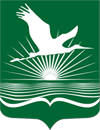Пожалуйста, используйте этот идентификатор, чтобы цитировать или ссылаться на этот ресурс:
https://rep.polessu.by/handle/123456789/9619Полная запись метаданных
| Поле DC | Значение | Язык |
|---|---|---|
| dc.contributor.author | Козлова, Т.В. | ru |
| dc.contributor.author | Козлов, А.И. | ru |
| dc.contributor.author | Бубырь, И.В. | ru |
| dc.contributor.author | Райлян, Н.М. | ru |
| dc.contributor.author | Махнюк, Е.Н. | ru |
| dc.contributor.author | Kozlova, T.V. | en |
| dc.contributor.author | Kozlov, A.I. | en |
| dc.contributor.author | Bubyr, I.V. | en |
| dc.contributor.author | Raylyan, N.M. | en |
| dc.contributor.author | Mahnyuk, E.N. | en |
| dc.date.accessioned | 2015-08-05T12:00:43Z | - |
| dc.date.available | 2015-08-05T12:00:43Z | - |
| dc.date.issued | 2015 | - |
| dc.identifier.citation | Естественная кормовая база рыб в пастбищной и интегрированной аквакультуре / Т. В. Козлова [и др.] Веснік Палескага дзяржаўнага універсітэта. Серыя прыродазнаўчых навук : научно-практический журнал. - 2015. - №1. - С. 49-54 | ru |
| dc.identifier.uri | https://rep.polessu.by/handle/123456789/9619 | - |
| dc.description.abstract | Исследовано влияние технологий пастбищного и интегрированного рыбоводства на качественные и количественные показатели уровня развития гидробионтов, составляющих кормовую базу рыб в мелиоративных водоемах. В водоеме с интегрированной аквакультурой в видовом составе зоопланктона доминировали представители Cladocera, а среднесезонные показатели биомассы в районе расположения места выгула уток и на удалении 50 м от него были в 1,3 раза выше и равнялись 10,9±0,98 и 8,4±1,52 г/м 3 соответственно. В среднем за сезон значения биомассы бентоса вблизи расположения места выращивания уток были в 1,5 раза выше, чем на удалении 50 м от него и составляли 8,5±0,80 и 5,1±0,60 г/м2 соответственно. Темп роста рыб, выращиваемых в поликультуре, был выше в среднем на 20% по сравнению с рыбами аналогичного видового состава в водоеме, где использовалась пастбищная технология. Установлено, что мускусные утки при выращивании на водоеме совместно с рыбой потребляли в значительном количестве естественные корма (растительность и беспозвоночных животных), и это способствовало их ускоренному росту. Такая технология способствует значительному сбережению кормов для птиц и экономически целесообразна при ведении интегрированного рыбоводства. | ru |
| dc.description.abstract | The influence of pasture technologies and integrated fish farming on the qualitative and quantitative indicators of the level of development of aquatic organisms that make up the food base of fish in ponds reclamation. In the pond with integrated aquaculture in the species composition of zooplankton dominated by representatives of Cladocera, and seasonal mean biomass values in the area of space–range ducks and at a distance of 50 m from it were 1.3 times higher and amounted to 10,9±0,98 and 8,4±1,52 g/m3, respectively. The average values for the season benthos biomass cultivation space in proximity ducks were above 1.5 times higher than 50 meters away from it and constituted and 8,5±0,80 5,1 ± 0,60 g/m2, respectively . The growth rate of fish farmed in polyculture was higher by an average of 20% compared to the same fish species composition in the pond, where a pasture technology. It was found that musk ducks on the pond in growing together with the fish consumed in a significant number of natural food (vegetation and invertebrates), and this contributed to their faster growth. This technology contributes to a significant saving food for birds and cost–effectiveness in the management of integrated fish farming. | en |
| dc.language.iso | ru | - |
| dc.publisher | Пинск : Полесский государственный университет | ru |
| dc.rights | открытый доступ | ru |
| dc.subject | Рыбное хозяйство | ru |
| dc.subject | Рыбоводство | ru |
| dc.subject | Аквакультура | ru |
| dc.subject | Мелиоративный водоем | ru |
| dc.subject | Зоопланктон | ru |
| dc.title | Естественная кормовая база рыб в пастбищной и интегрированной аквакультуре | ru |
| dc.title.alternative | Natural Food Supply of Fish in the Pasture and Integrated Aquaculture | en |
| dc.type | Article | en |
| Располагается в коллекциях: | № 1 | |
Все ресурсы в архиве защищены авторским правом, все права сохранены.
